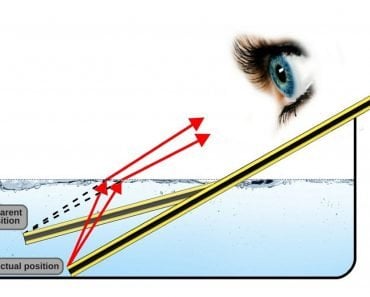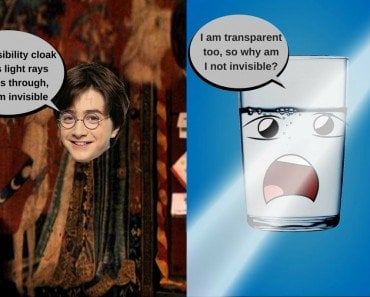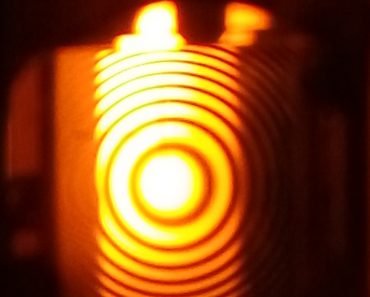Table of Contents (click to expand)
The law of reflection is the principle that when a ray of light hits a surface, the ray of light will reflect off the surface at the same angle as it hit the surface. The angle of incidence is the angle at which the ray of light hits the surface, and the angle of reflection is the angle at which the ray of light reflects off the surface.
The law of reflection (in physics) states that when a light ray is incident on a plane surface, the incident ray, the reflected ray and the “normal” to the surface of the mirror all lie in the same plane. It also states that the angle the incident ray makes with the normal is equal to the angle that the reflected ray makes with the normal.
If you are a tennis player, particularly a good one, you must be quite good at estimating the path that the ball will follow just by looking at the way it was hit by your opponent. If you’re not good at tennis, then you might not be very good in this particular department.
However, we’re not here to talk about tennis. The reason the tennis example was appropriate is that it shows how important it is, in a game like tennis, to be able to predict how a projectile (i.e., the tennis ball) is going to behave. The life and success of a tennis player becomes much easier if they are skilled in those particular predictions.

Recommended Video for you:
Law Of Reflection Definition
The law of reflection states that when a light ray is incident on a plane surface, then the incident ray, the reflected ray and the normal to the surface of the mirror all lie in the same plane. Additionally, the angle that the incident ray makes with the normal is equal to the angle that the reflected ray makes with the normal.
Light is known for ‘behaving’ in a very predictable manner, which is actually very good thing for us. Due to this predictability, we’re able to determine what path it will follow once it strikes a flat surface.
If you observe a single ray of light approaching and bouncing off a flat mirror, you can always tell how the reflected light ray will behave, i.e., what direction would it go and at what angle. This is basically what the law of reflection is all about.
Here’s a diagram to help you visualize the law of reflection a bit better:
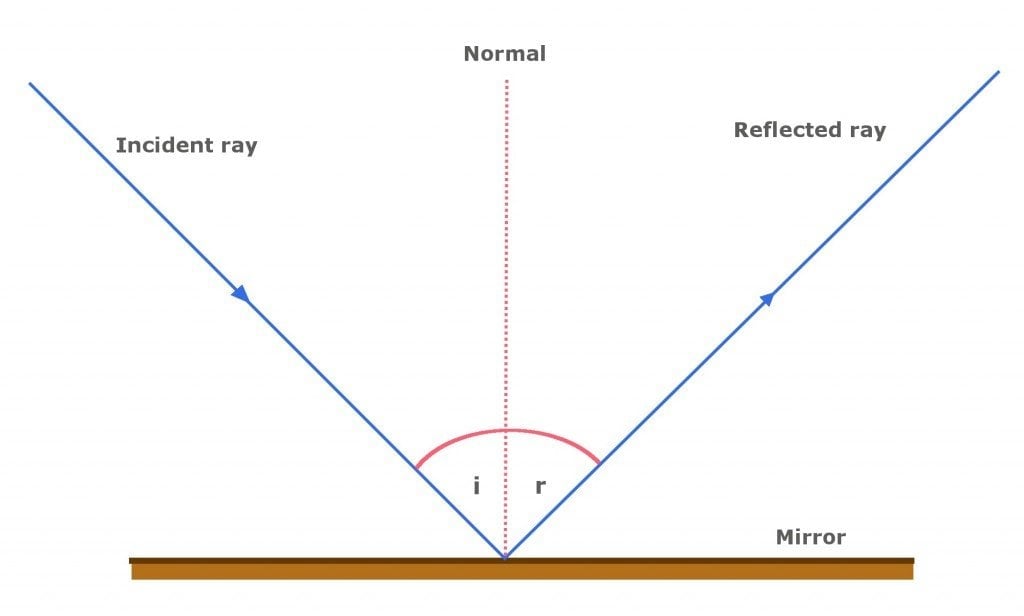
Angle Of Incidence And Angle Of Reflection
In the diagram above, the light ray approaching the mirror is known as the incident ray, while the one that bounces off the mirror is called the reflected ray. Note that at the point where the incident ray meets the mirror, a straight line can be drawn perpendicular to the surface of the mirror. This line is called the ‘normal’.
Now, the angle that the incident ray makes with the normal is called the angle of incidence, while the angle that the reflected ray makes with the normal is known as the angle of reflection. The law of reflection simply states that both of these angles have the same value. For instance, if the angle of incidence is 45 degrees, the angle of reflection will also be 45 degrees.
Law Of Reflection Example
There are countless examples where the law of reflection comes into play, primarily because the law of reflection works not only for visible light, but other electromagnetic radiation as well. However, the one example (related to visible light) that we come across almost every day is related to the mirrors we have in our homes.
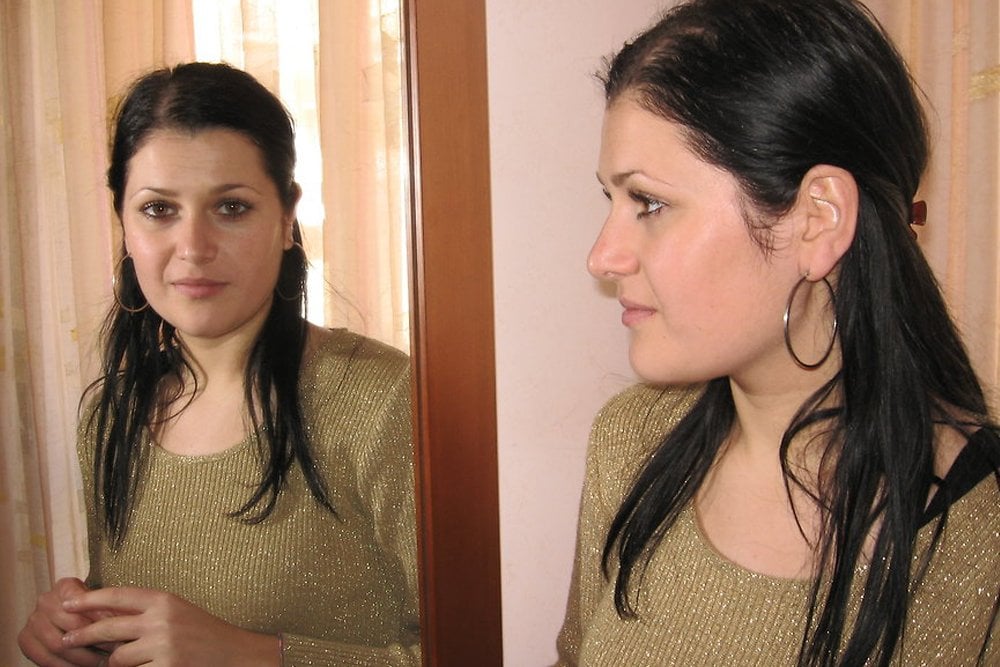
You have probably been in the situation countless times when you’re looking at the mirror, but also talking to someone at the same time… while maintaining eye contact! How does that happen?
Since your eyes are pointed towards the mirror, how can you make eye contact with someone else? Well, quite simply, because it’s not you, but your mirror reflection that makes eye contact with the person to whom you are talking. It’s very similar to the woman’s image pictured above, and is a very good example of the law of reflection at work in real life.
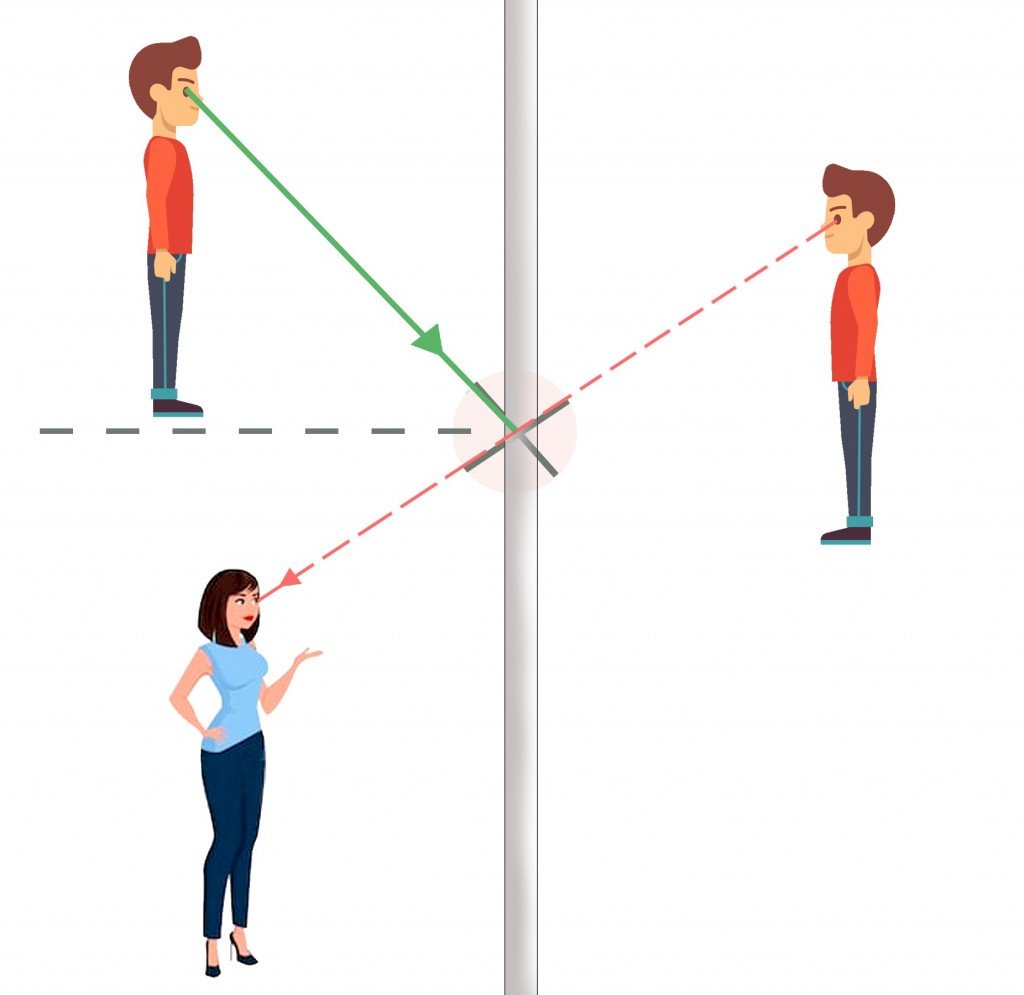
You can make eye contact with someone else through your mirror reflection because you know, subconsciously, that the law of reflection comes into play whenever you look at a mirror. So, when you look into the mirror at a certain angle, your mirror reflection will be able to make eye contact with the other person in the room!



